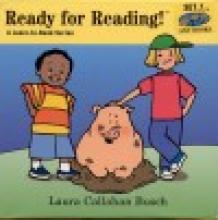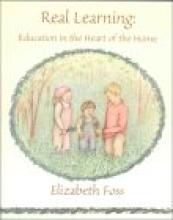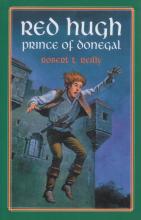No name
Reading the Saints
Ready for Reading! A Learn-to-Read Series, Set 1 (Ant Books)
This beginning reader set provides young students with small activity booklet/readers that can be read at a very primary level. The author combines simple words that can be read phonetically with one or two sight words in each booklet that the child will learn to recognize (words like: "look", "go" and "the"). I thought the illustrations were more appealing than those found in the Bob Books.
A number of the stories include a blank to insert the reader's name and a few family names into the story. I thought this was a clever idea since many children to learn to write and recognize their own name even before they are reading. There are also little puzzles, word-and-picture matching and writing practice.
The "Ready for Reading" booklets are very appealing to little children (who always seem to love little books, especially when they come in a neat package), and I'm sure there are many four and five year olds who would delight in having these little workbook sets for their special schooltime. Even as I write, my almost-five-year-old has been asking and asking for me to finish reviewing these books so that she can use them and color them in.
Using "Angela" as an example of the reader's name (that the reader or parent can fill in), these are the titles of the booklets - "The Angela Book", "Angela Can", "Angela's Family Book", "The Pig is in the Mud", "The Big Hat", "Little Christina" (younger sibling name to be filled in), "Is it a Cat?", "Yes-No Workbook", "Go to Bed", "Treasure Hunt", "Dog is Fed", "Angela can Bat".
The booklets have glossy, color covers and black and white illustrations that could be colored in by the child. The text includes teaching suggestions in small print right alongside the student work! These include helps for common problems that children run into.
12 softcover booklets 12-16 pgs. each + parent's guide in a box
Donated for review by Barnes and Noble at request of author
Ready for Reading! A Learn-to-Read Series, Set 2 (Caterpillar Books)
In a similar fashion to the first set, these books offer additional, more advanced, reader/activity books that combine practice of lots of phonics based words with a number of sight words (some of the sight words could be learned phonetically later on). By the time the child is finished with this second series, he will have practiced 62 phonics-based words (such as Dad, jet, him, stop and bug) and 25 sight words (such as love, you, the, Mommy and room).
The stories are simple and silly and this set has a few with a superheroes theme. The idea is continued of filling in the reader's name (including the last name in one book). Again, using "Angela" as a sample name, the story titles are: "So Can Pop", "The Big Egg", "I Am Angela", "Super Angela", "Not So Hot", "Do It", "Boy and Girl Workbook", "Little Christina and the Pen" (fill in the name of a younger sibling), "A Pig is in the Room", "Angela is So Fun", "Angela's Family Fun", "Super Angela Meets Big Bad Bill".
12 softcover booklets 12-18 pgs. each + parent's guide in a box
Donated by B&N at request of author.
Real Learning
Elizabeth Foss, mother of seven homeschooled children (ranging in age from 16 down to toddler), has done a great job synthesizing her approach to "educating a child in the heart of the family given to that child by his Creator" in her book, Real Learning: Education in the Heart of the Home.
The book mixes Charlotte Mason's educational philosophy (lots of living books, short lessons and "masterly inactivity") with pithy quotes from Edith Stein, Pope John Paul II and other Catholic thinkers and educators. She points out that although Charlotte Mason and Edith Stein never met or read each other's writings both emphasize the "absolute necessity of engaging the whole child - heart, soul and mind - in order to educate him".
For the first third of her book, Foss explains her philosophy of educating in the home. It is a different way of looking at how to homeschool. She explains that no subject should be an entity unto itself but instead, all courses should feed off each other. Learning becomes then such a part of the student's world that learning is a "24/7" activity. I especially like that teaching the Catholic faith to our children is not taught in a vacuum. Liturgical celebrations - the cycle of feasts and famines - enliven the school year. The Catholic Church's actions and her many heroes illustrate different periods of history. Liturgical music (classical, chant or contemporary) defines different music styles. Art takes off by incorporating the study of various forms of religious art - iconography, renaissance, church architecture and others. Religion passes from textbook memorization into the heart and soul of the student, to carry them through to adulthood. The Catholic faith is lived in the heart of the home.
Mrs. Foss points out this is not a "how-to" book, but rather a "fly on the wall" perspective of real learning in the Foss (and other) household. Each home will develop its own curriculum. She has detailed quotes from other homeschooling veterans who also use their own form of Charlotte Mason education.
Suggestions for reading books, a sample unit study for Advent, and quotes from other "real learning" homeschoolers make Real Learning a very usable, practical guide to develop your own "real learning" curriculum. I read it at the beginning of my journey with my little ones and again about halfway through. Each time I took away so much more. I'll read it again this summer to refresh my teaching "in the heart of the home".
Reclaiming America's Children
This is essentially a brief training manual written to help parents successfully raise children in difficult times. It appears to be written especially for caring parents whose children are attending public or private schools. Although it is not explicitly Catholic in content, the teachings and basic principles presented are essentially Catholic (and the author is Catholic).
Society bombards parents with many questionable philosophies regarding the raising of children. Some are well-meaning, but misguided and can fairly easily be "repaired" with a little common sense. Others are unequivocally disastrous when implemented. In a double-whammy, society bombards our children with many negative influenes that compromise those principles that we most want to instill in them.
The author simply and realistically cuts through all this confusion and shows the truth of traditional Judeo-Christian teachings to be the right and practical answer. Parents will learn to distinguish these sound teachings from Humanistic/Atheistic and New Age teachings and understand the devastating consequences of these erroneous philosophies.
The book discusses the significance of basic parenting styles and how these styles (warm-restrictive, cold-restrictive, warm-permissive or cold-permissive) will impact your children. Other chapters on praenting cover:
- "Conscience: Its Role in Developing Empathy and Compassion" and
- "The Great Self-Esteem Hoax: Relaxed Standards Created Restlessness, Dissatisfaction and a Hunger to Get More for Less"
The remainder of the book covers the great moral dangers children are faced with today - values education (including suicide education, sexual orientation education and AIDS education), sex education and pornography, televised violence and drug abuse. Although these chapters are primarily designed to warn and inform parents of school children to the related dangers, this makes valuable reading for homeschool parents as well. Besides, reminding us of some of the reasons we homeschool, the author provides many insights into human nature and many other helpful tidbits.
Each of the eight chapters provides a summary and "helpful tips" segment. The book also provides a chart comparing three major philosophies relating to raising and educating children: Judeo-Christian, Humanistic/Philosophical Atheism and Cosmic Humanism (New Age Thinking). An extensive bibliography and index are included in the back of the book. Highly recommended.
Red Butterfly
Red Hugh, Prince of Donegal
The true story of Hugh Roe O'Donnell, an Irish prince who fought the English Invaders at the time of Queen Elizabeth. This is a fast paced story – quite exciting and with a touch of romance. The hardships endured by Red Hugh, particularly during his imprisonment, are a bit graphic, but probably not too intense for mid-gradeschoolers and up. We are reminded of Red Hugh's faith when he asks the English to let him see a priest. The request is refused and the reader is introduced to the tactics of indoctrination, used to attempt to sway the hero from his Irish and Catholic loyalties. This will probably be a favorite among boys who like stories about battles, chases, and the victory of good over evil.








